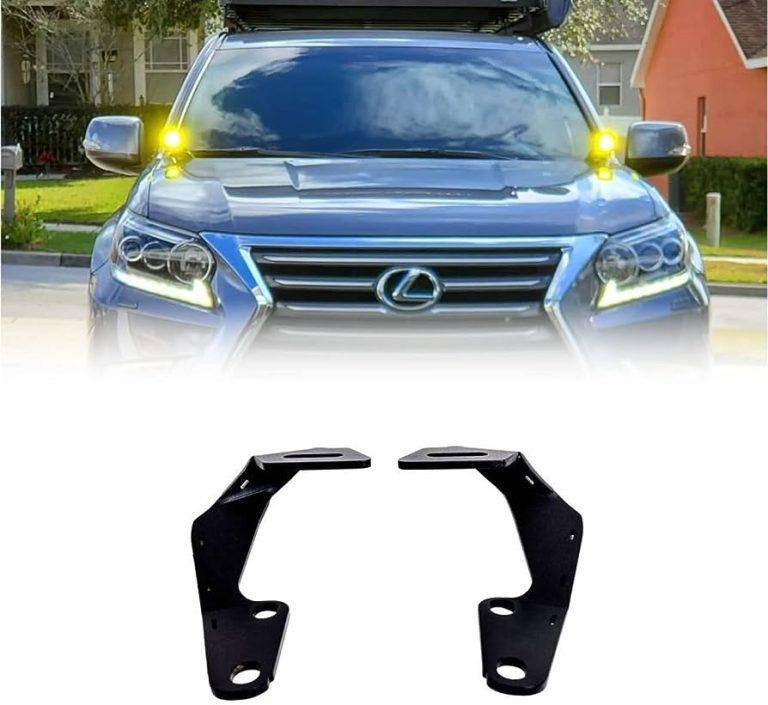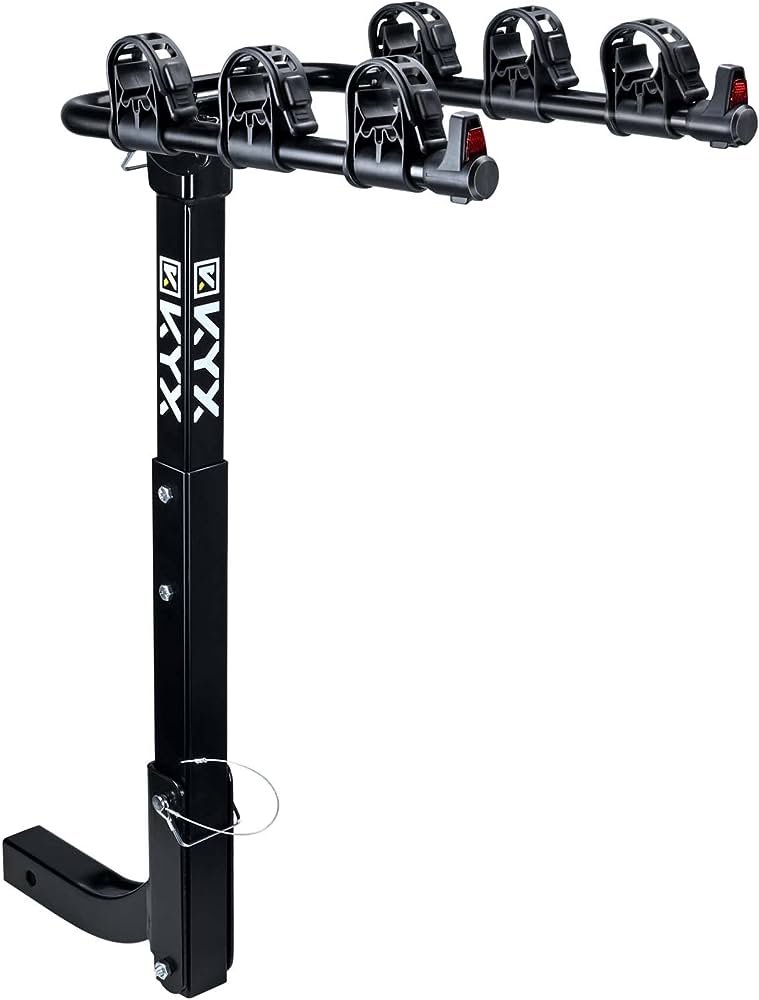A hitch receiver is a device installed on a vehicle that allows for towing or carrying heavy loads. It is a solid metal tube that is attached to the frame of the vehicle and has a square or rectangular shape to accommodate a trailer or hitch-mounted accessories.
It is an essential component for towing purposes and provides a secure connection between the vehicle and the load being towed. With a hitch receiver, users can easily attach trailers, bike racks, cargo carriers, or other accessories to their vehicles, making it convenient for transporting goods or equipment.
Additionally, it offers versatility as different hitch receivers can be used for varying towing capacities.

Credit: shop.teslarati.com
Understanding Hitch Receivers
A hitch receiver is an essential component for towing that mounts onto a vehicle’s rear. It provides a secure connection point for attaching trailers, bike racks, or other accessories, making it a versatile and convenient solution for transporting heavy loads.
Definition And Purpose Of A Hitch Receiver
A hitch receiver is a device that is installed on the rear of a vehicle to enable towing capabilities. It consists of a metal tube that is attached to the vehicle’s frame, allowing the attachment of various accessories such as a hitch ball mount or a bike rack.
The main purpose of a hitch receiver is to provide a secure and convenient connection point for towing or carrying additional cargo.
Different Types Of Hitch Receivers
Hitch receivers are available in different classes, each designed to handle varying towing capacities. Here are the different classes of hitch receivers:
- Class i: Designed for light-duty towing, typically supporting up to 2,000 pounds of gross trailer weight and 200 pounds of tongue weight.
- Class ii: Suited for slightly heavier loads, with a capacity of up to 3,500 pounds of gross trailer weight and 300 pounds of tongue weight.
- Class iii: Commonly used for towing medium-sized trailers or carrying heavy cargo, with a capacity of up to 6,000 pounds of gross trailer weight and 600 pounds of tongue weight.
- Class iv: Suitable for larger trailers and heavier loads, with a capacity of up to 10,000 pounds of gross trailer weight and 1,000 pounds of tongue weight.
- Class v: Catering to heavy-duty towing needs, with a capacity of up to 14,000 pounds of gross trailer weight and 1,400 pounds of tongue weight.
Components Of A Hitch Receiver
A hitch receiver consists of several key components that work together to enable towing capabilities. These components include:
- Receiver tube: The main part of the hitch receiver, usually a square or rectangular metal tube, that is mounted to the vehicle’s frame.
- Hitch ball mount: Attaches to the receiver tube and provides a connection point for the trailer or accessory being towed. It comes in different sizes to accommodate various coupler sizes.
- Hitch pin & clip: Secures the hitch ball mount to the receiver tube, preventing it from inadvertently detaching.
- Safety chains: Additional safety feature that connects the trailer to the vehicle, providing a backup connection in case of hitch or coupler failure.
Hitch Receiver Capacity And Ratings
Understanding the capacity and ratings of a hitch receiver is crucial for safe towing. Here are the key terms to know:
- Tongue weight: The maximum vertical weight exerted on the hitch ball mount, including the weight of the trailer’s load.
- Gross trailer weight: Refers to the total weight of the loaded trailer, including its cargo and fluids.
- Gross vehicle weight rating (gvwr): The maximum weight that a vehicle, when fully loaded, is designed to handle, including the weight of passengers, cargo, and the trailer tongue weight.
By knowing the hitch rating and understanding the weight limitations of your vehicle, you can ensure safe towing practices.
Remember, a properly installed and correctly matched hitch receiver provides the foundation for secure towing and hassle-free transportation.
Choosing The Right Hitch Receiver
A hitch receiver is an essential accessory for towing trailers and other heavy loads. It is designed to fit onto the back of a vehicle and provides a secure attachment point for the trailer hitch. With various sizes and weight capacities available, choosing the right hitch receiver is crucial for safe and efficient towing.
Determining vehicle compatibility:
- Before choosing a hitch receiver, it’s crucial to assess your vehicle’s compatibility. Consider the make, model, and year of your vehicle, as well as its towing capacity. Not all vehicles are designed to tow, so ensure your vehicle can handle the load you intend to tow.
Considerations for towing needs:
- Your towing needs will determine the type of hitch receiver you should choose. Ask yourself questions such as what you plan to tow, the weight of the load, and the frequency of towing. Understanding your specific requirements will guide you towards selecting the right hitch receiver.
Types of trailers:
- Different trailers require different hitch receivers. Common types include ball mounts, gooseneck hitches, and fifth-wheel hitches. Each type accommodates specific trailer configurations, so be sure to choose the hitch receiver that matches your trailer type.
Weight capacity:
- Hitch receivers come with weight capacity ratings that indicate the maximum load they can safely tow. Consider the weight of your trailer and ensure your hitch receiver can handle it. It’s always best to choose a hitch receiver with a higher weight capacity than your trailer’s weight to ensure safety and stability.
Towing frequency:
- How often you plan to tow will impact your hitch receiver choice. If you tow frequently, investing in a heavy-duty hitch receiver is advisable. For occasional towing, a standard hitch receiver may suffice. Consider your towing frequency when determining which hitch receiver is right for you.
Assessing hitch receiver classes:
- Hitch receivers are categorized into different classes based on their towing capacity. Class i hitch receivers have the lowest capacity, while class v hitch receivers can handle heavier loads. Review the classes and select the one that aligns with your towing needs and vehicle compatibility.
Understanding hitch receiver installation:
Diy installation:
- If you have experience with automotive diy projects, you can opt for self-installation. Diy installation kits are available and often come with detailed instructions. Ensure you have the necessary tools and knowledge to complete the installation correctly, as improper installation can compromise towing safety.
Professional installation:
- For those without the expertise or confidence to install a hitch receiver themselves, professional installation is recommended. Trained technicians will ensure the hitch receiver is installed correctly and securely. This eliminates the risk of any installation mistakes and gives you peace of mind knowing your towing setup is safe and reliable.
Choose the right hitch receiver for your towing needs:
Finding the right hitch receiver involves assessing your vehicle compatibility, considering your towing needs, and understanding the different types of trailers. With weight capacity and towing frequency in mind, you can confidently choose a hitch receiver that accommodates your specific requirements.
Whether you opt for a diy installation or professional assistance, selecting the right hitch receiver is essential for safe and successful towing.
Hitch Receiver Accessories And Safety Guidelines
A hitch receiver is a device on a vehicle that allows for the attachment of accessories like bike racks and cargo carriers. It is important to follow safety guidelines such as proper installation, weight capacity, and regular inspections to ensure a safe and secure towing experience.
A hitch receiver is a versatile component that allows you to tow trailers, mount bike racks, and carry other accessories with ease. To enhance the functionality and safety of your hitch receiver, there are several essential accessories you should consider.
Additionally, it is crucial to follow safety guidelines to ensure a smooth and secure towing experience. Let’s explore some common hitch receiver accessories and safety measures to keep in mind:
Essential Hitch Receiver Accessories
- Hitch locks: Secure your trailer hitch and prevent theft by using a hitch lock. This accessory ensures that your hitch receiver is tightly fitted and prevents unauthorized removal.
- Hitch covers: Protect your hitch receiver from the elements and enhance the aesthetics of your vehicle with a hitch cover. It adds a stylish touch while keeping dirt, debris, and water out of the hitch receiver when not in use.
- Wiring harnesses: When towing a trailer, proper wiring harnesses are vital. These connectors ensure that your vehicle’s lights and signals sync up with the trailer, allowing visibility and safety on the road.
- Safety chains: Safety chains act as a backup in case the hitch connection fails. They provide an additional level of security, preventing the trailer from completely detaching from the vehicle in an emergency situation.
Understanding Trailer Brake Controllers
- Trailer brake controllers are essential if you are towing a trailer with electric brakes.
- A trailer brake controller enables you to control and adjust the braking force of your trailer’s brakes from your vehicle’s cab. It ensures a smooth and controlled braking experience, increasing safety on the road.
Proper Loading And Weight Distribution
- It is crucial to load your trailer properly and distribute the weight for safe and secure towing.
- Ensure that you distribute the weight evenly throughout the trailer and do not exceed the recommended weight limit.
- Proper weight distribution helps to maintain stability, reduce swaying, and improve overall towing performance.
Hitch Receiver Maintenance And Care
To ensure the longevity and optimal performance of your hitch receiver, regular maintenance and care are essential. Here are a few key points to keep in mind:
- Rust prevention: Coat your hitch receiver with a rust-resistant paint or invest in a durable, rust-resistant hitch to protect it from corrosion caused by moisture and road salt.
- Lubrication: Regularly apply lubricant to the hitch receiver’s moving parts and components to prevent rust and ensure smooth operation.
- Regular inspections: Conduct routine visual inspections of your hitch receiver to check for any signs of wear, damage, or loose bolts. This helps identify any potential issues before they become major problems.
Remember, these accessories and safety guidelines are essential for a safe and hassle-free towing experience. By following these recommendations and properly maintaining your hitch receiver, you can enjoy peace of mind on every journey.
Frequently Asked Questions For What Is A Hitch Receiver?
What Is The Difference Between A Hitch And A Receiver?
A hitch is a device that allows you to attach a trailer or other towing equipment to your vehicle. A receiver, on the other hand, is the part of the hitch that actually receives the towing equipment. The hitch is usually attached to the frame of the vehicle, while the receiver can be detached and removed when not in use.
The receiver has a square tube that protrudes from the rear of the vehicle and has a hole where the trailer hitch ball or other towing equipment can be inserted. The receiver is available in different sizes to accommodate various towing capacities.
In summary, the hitch is the complete towing system, while the receiver is the specific part that connects the vehicle and the towing equipment.
What Is The Purpose Of A Hitch Receiver?
A hitch receiver is used to attach trailers, bike racks, and other accessories to a vehicle. It serves as a secure connection point for towing or hauling items. The purpose of a hitch receiver is to provide a stable and reliable link between the vehicle and whatever is being towed or carried.
It allows the weight of the load to be distributed evenly and ensures safer transportation. Hitch receivers are available in different sizes and weight capacities to accommodate various types of trailers and accessories. They are designed to withstand the rigors of towing and provide a strong connection between the vehicle and the load being carried.
Overall, the purpose of a hitch receiver is to enable efficient and hassle-free towing or carrying of items behind a vehicle.
Is It Easy To Install A Hitch Receiver?
Yes, installing a hitch receiver is generally an easy process. First, you need to gather the necessary tools such as a socket wrench, torque wrench, and hitch receiver kit. Then, follow the manufacturer’s instructions to assemble and attach the receiver to your vehicle’s frame.
This typically involves removing the rear bumper, drilling holes, and bolting on the receiver. Ensure it is securely fastened and aligned properly. Once attached, you can connect the wiring harness for brake lights and turn signals. Finally, test the hitch by attaching a trailer or hitch-mounted accessory.
Remember to periodically inspect and maintain your hitch for continued safety and reliability. With a little time and effort, you can successfully install a hitch receiver and expand the towing capabilities of your vehicle.
How Do I Know If My Car Has A Hitch Receiver?
To determine if your car has a hitch receiver, inspect the rear bumper area. Look for a square or rectangular-shaped opening, usually about 2 inches by 2 inches. The hitch receiver is typically hidden behind a removable panel or cover.
You may need to remove this cover to access the receiver. Alternatively, check your car’s owner’s manual or contact the manufacturer for information specific to your vehicle. The manual will often include details on the presence and location of a hitch receiver.
If you’re still unsure, a certified mechanic or dealership can assist you in identifying whether your car has a hitch receiver. They can inspect the vehicle and provide accurate information about its towing capabilities. Remember, it’s crucial to verify the presence of a hitch receiver before attempting to tow anything with your vehicle to ensure safety and avoid any damage.
Conclusion
To summarize, a hitch receiver is a useful vehicle accessory that allows you to tow trailers and carry heavy loads with ease. Whether you’re planning a family camping trip or need to transport equipment for work, having a hitch receiver can greatly expand your vehicle’s capabilities.
By providing a secure and sturdy connection between your vehicle and the trailer, it ensures a safe and reliable towing experience. Furthermore, hitch receivers come in various sizes and weight capacities to accommodate different vehicles and towing needs. Before purchasing a hitch receiver, make sure to consider factors such as the towing capacity of your vehicle and the type of trailer you’ll be towing.
Overall, adding a hitch receiver to your vehicle can make a world of difference when it comes to hauling heavy loads, making it an essential accessory for any adventure or job.




